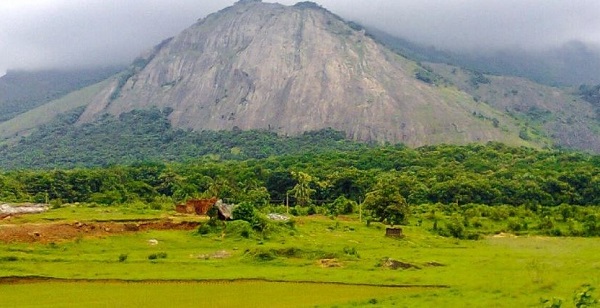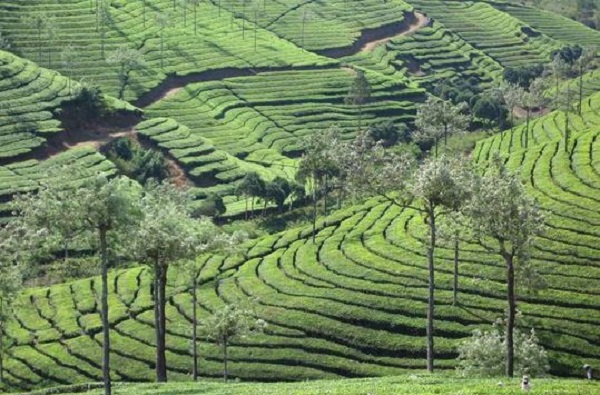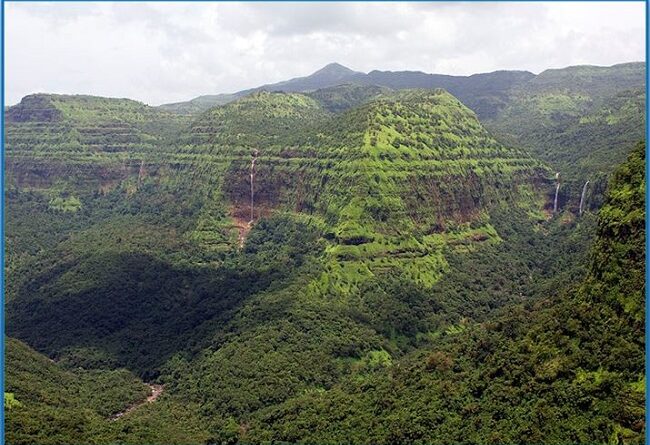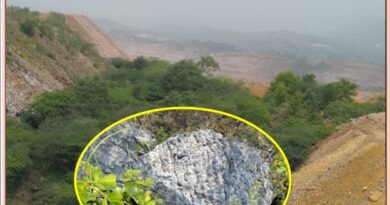‘Western Ghats Escarpment’ An incredible place of beautiful landscape and a gem of Indian biodiversity

The Western Ghats Escarpment is one of the best examples of passive margin great escarpments in the world. The zone around the Western Ghats is an area of beautiful scenery, rugged terrain, deep valleys, spectacular waterfalls, and dense forest with wildlife. Apart from this other landforms are plateau outliers, deep gorges, beheaded plateau valleys, and laterite tablelands.
Also read-Meghalayan Age’ the time period where we live. Know the new chapter in earth’s history!
There are numbers of stream piracy in the Ghats zone. The Ghats is the main source of east-flowing rivers and numerous short, swift, coastward-flowing rivers. Most scientists believe that the Western Ghats Escarpment was initiated as a rifted margin at the time of eruption of the Deccan basalts in the late Cretaceous. Although it is generally agreed that the escarpment has receded inland, there are differences of opinion about the mode and rate of recession.

Older than the Himalayas the Western Ghats is one of the eight “hottest hot-spots” of biological diversity in the world. It includes a diversity of ecosystems ranging from tropical wet evergreen forests to montane grasslands. At least 325 globally threatened (IUCN Red Data List) species occur in the Western Ghats.
A chain of mountains running parallel to India’s western coast, approximately 30-50 km inland. These mountains cover an area of around 140,000 km² in a 1,600 km long stretch that is interrupted only by the 30 km Palghat Gap at around 11°N.
Palghat Gap or Palakkad Gap is a low mountain pass in the Western Ghats between Coimbatore in Tamil Nadu and Palakkad in Kerala. It has an average elevation of 140 meters with a width of 25-30 kilometers.

The Sahyadri or western ghat range consists of numerous hill stations like Matheran, Mahabaleshwar, Panchgani, and Amboli ghat. The Nilgiri range is home to famous hill stations like Ooty, Coonoor, Lonawala, Khandala, Wayanad, Coorg, Idukki, and Munnar.
Anaimalai or Anaimudi range-
Anai Mudi, a peak located in the Idukki district of Kerala, is the highest peak of the Western Ghats range. It rises to 2,695 meters and is also peninsular India’s highest peak. Visit this place to take a glimpse of the majestic Asian Elephants, Nilgiri Tahrs, the endangered caprid, and the Gaurs, the largest species of cattle. It is the Garden of lush evergreen forests covering the gentle slopes.

Doddabetta peak-
Doddabetta peak in the district of Tamil Nadu is the highest peak in the Nilgiri range. Nilgiris range of Blue Mountains is famous for its hill stations, Nilgiri Mountain Railway, and national park. With beautiful nature and soothing weather, this is the perfect destination to become stress-free. Trekking here is easy and every step of your journey gives you eye-catching views and experiences.
Palni Hills
The Palani Hills are another mountain sub-range of the Western Ghats ranges, lies between the Cumbum Valley, the Vaigai River valley, and the Kongunadu region. Palni Hills is also having Wildlife Sanctuary and National Park.
Cardamom Hills
The Cardamom Hills or Yela Mala is also part of the western ghat mountain range. It is located in southeast Kerala and southwest Tamil Nadu in India. The name Cardamom comes from the cardamom spice grown in much of the hills’ cool elevation, which also supports pepper and coffee.

The Western Ghats mostly have pleasant weather throughout the year. However, avoid visiting the mountain range during monsoons as you may face heavy rainfalls. During monsoon, the weather is quite gloomy and the peaks may be covered with clouds. Summer may be the best time to visit the Western Ghats.
Source- unesco.org, wwfindia.org, panda.org




Pingback: OMG! The Stunning 'Khandala-Lonavala' Ever - Geotourism